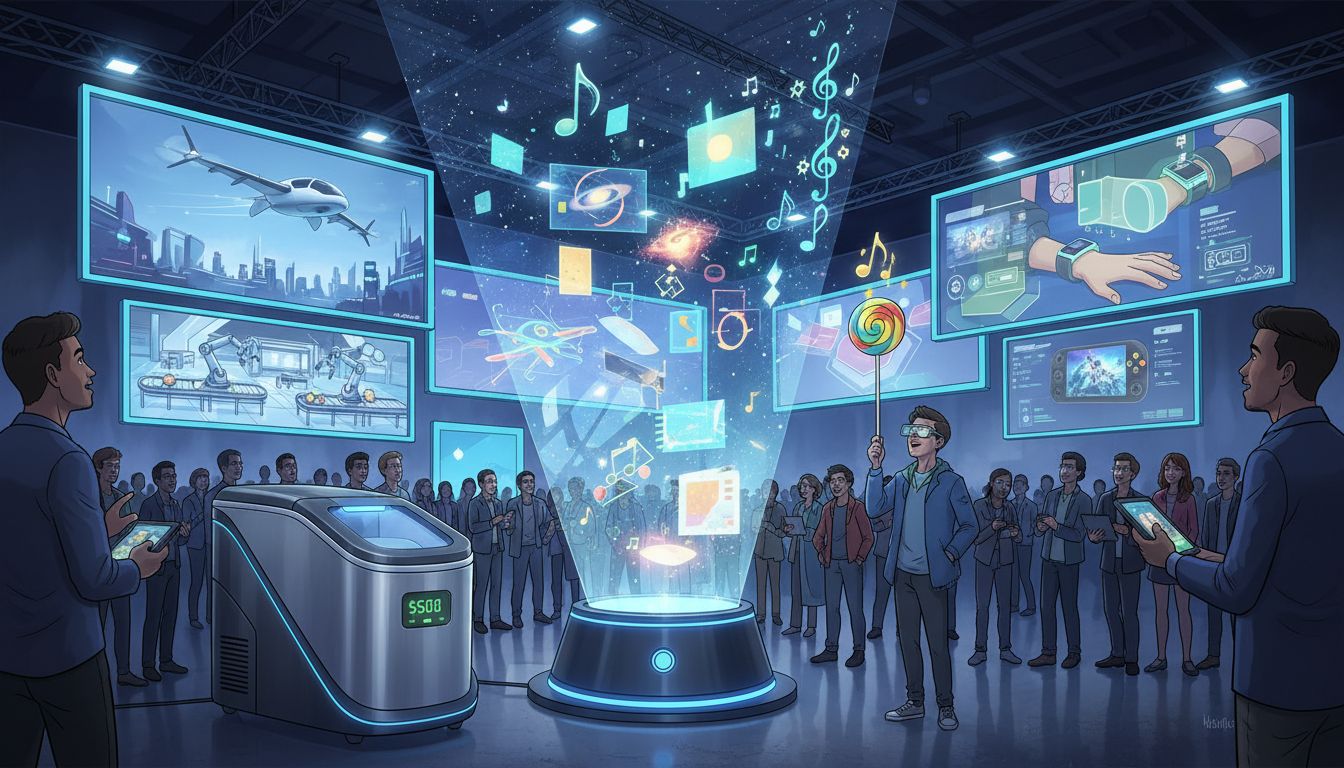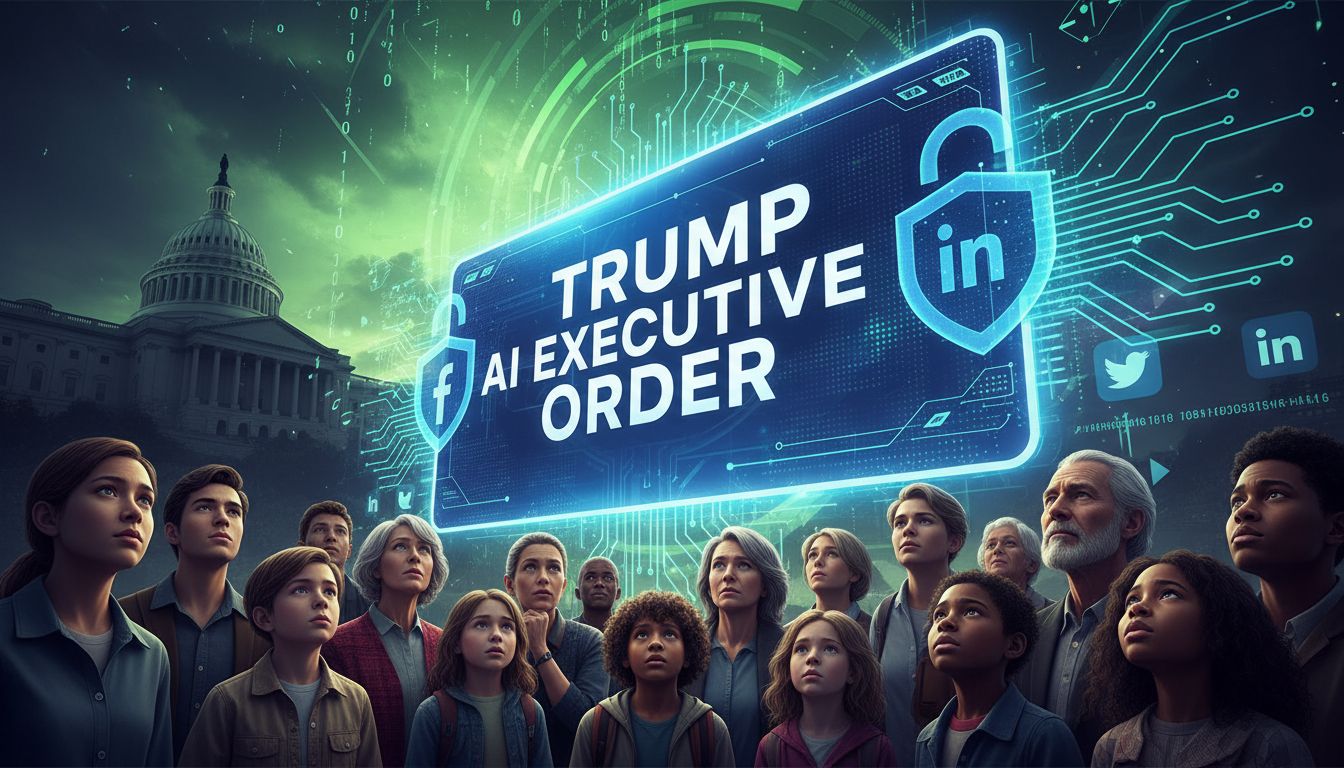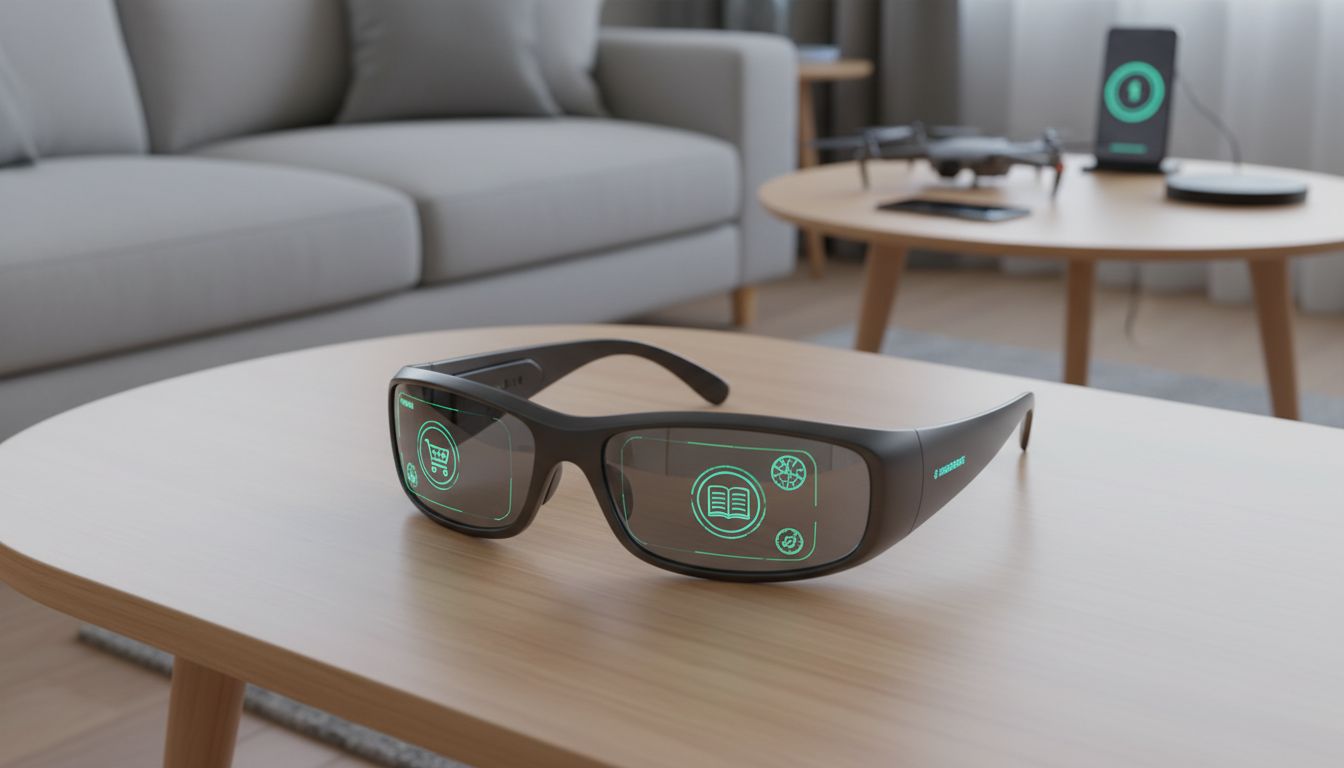Stepping into the future of content creation, OpenAI Sora AI video creation marks a pivotal moment for creatives and tech enthusiasts alike. This breakthrough app breathes life into text prompts, turning them into photorealistic videos that were once just figments of our imagination. Immersing yourself in its unparalleled knack for crafting vivid imagery, you’ll discover rendering speeds that are as quick as snagging a burrito and delve into the ways it’s redefining narrative conventions with filmic syntax.
Diving into this groundbreaking journey, we’re confronting the vital moral dilemmas directly, as championing conscientious application of this avant-garde technology is paramount. Plus, for visual artists dreaming up their next big project or animated story—Sora opens doors to endless creative possibilities. Get ready; you’re about to discover how OpenAI is revolutionizing video generation in ways you’ve never imagined before.
Table of Contents:
- Exploring OpenAI’s Sora: The Dawn of AI-Generated Videos
- The Unmatched Photorealism of Sora Videos
- How Fast Can Sora Render Your Imagination?
- Cinematic Grammar and Storytelling Through AI
- Safety Measures in the Age of Deepfakes
- Creative Possibilities with Sora for Visual Artists
- FAQs in Relation to Openai Sora Ai Video Creation
- Conclusion
Exploring OpenAI’s Sora: The Dawn of AI-Generated Videos
Imagine typing a simple sentence and watching it transform into a minute-long video that looks so real, you’d swear it was filmed on location. That’s the magic behind OpenAI’s new app called Sora, which is currently taking the world of artificial intelligence by storm. This groundbreaking technology is designed to create photorealistic videos from nothing but text prompts, setting a new benchmark in the realm of video generation.
The Unmatched Photorealism of Sora Videos
Sora stands out because it doesn’t just generate any videos; it crafts experiences that are strikingly realistic. The uniqueness of this instrument lies in its emphasis on creating lifelike images and the capability to churn out extended sequences lasting up to a minute, something few rivals can claim. Imagine wanting to see Tokyo city under beautiful snowy weather or witnessing people enjoying nearby stalls as gorgeous sakura petals flutter around them; with Sora, such scenes aren’t just imaginable—they’re creatable.
This isn’t merely about adding another cool gadget to our digital toolbox—it represents an evolution in how we tell stories through visual media. With just a few keystrokes, storytellers can now transform their wildest dreams into cinematic reality, bypassing the need for hefty gear or large crews.
How Fast Can Sora Render Your Imagination?
If you think creating high-quality videos takes forever, think again. With Sora’s cutting-edge rendering speed being compared humorously yet aptly “to going out for a burrito,” users can expect quick turnarounds for their creations—blazing fast by traditional standards and even speedy when pitted against other leading video generation tools.
Cinematic Grammar and Storytelling Through AI
Digging deeper into what makes these videos stand apart reveals an emergent grasp of cinematic grammar and storytelling capabilities inherent within the AI itself. Without explicit instructions beyond initial prompts, generated content showcases multiple shots across animated scenes—all woven together seamlessly like chapters in a book or sequences in your favorite movie. This suggests not only technological sophistication but also an intuitive understanding of narrative thrust embedded within OpenAI’s model.
Pioneering ventures like this signal more than advancements in tech; they herald new eras where imagination meets manifestation effortlessly—where every thought has potentiality rendered visible (and beautifully so) at breakneck speeds never before deemed possible outside science fiction narratives.
OpenAI’s Sora is revolutionizing video creation by turning text into ultra-realistic videos, fast. Now, anyone can craft vivid stories without needing a big budget or a crew.
The Unmatched Photorealism of Sora Videos
When you think about AI-generated content, the word “realistic” might not be the first thing that pops into your head. But OpenAI’s new app called Sora is here to flip that script. This powerhouse can transform simple text prompts into minute-long videos that are so lifelike, they’ll make you do a double-take.
What distinguishes Sora in the crowded arena of video creation? For starters, its ability to produce photorealistic videos is second to none. Imagine typing out a scene from your dream last night and watching it come to life with breathtaking detail. We’re delving into a realm where your wildest dreams don’t just flutter by; they’re captured, crafted into visual masterpieces that echo the very essence of enchantment.
Sora stands tall among competitors mainly because it doesn’t just create short clips; it crafts stories up to one minute long. This leap in duration allows for more complex narratives and deeper emotional connections with viewers—something previously unheard of in AI-generated content.
Capturing Reality: The Text-to-Video Model
Digging deeper, what really makes Sora shine is its sophisticated text-to-video model. By understanding and interpreting text input prompts with an almost human-like intuition, this AI model constructs scenes filled with dynamic elements—from gorgeous sakura petals floating down a bustling city street to a fluffy monster kneeling under snowy Tokyo skies—all rendered within moments.
It’s not merely assembling disparate visuals; it involves weaving together intricate visual narratives from mere words, showcasing the remarkable strides AI has made in deciphering our language and morphing it into breathtaking imagery.
Making Every Second Count
Transforming mere moments into intricate tales, these brief marvels effortlessly juggle complexity. Each frame feels alive, teeming with details like people enjoying nearby stalls or camera moves capturing beautiful snowy weather over Tokyo City—all woven seamlessly together as if directed by a seasoned filmmaker rather than generated by code.
Incorporating multiple shots and animated scenes without explicit instructions showcases not only technical prowess but also an emergent grasp on cinematic grammar—that invisible thread holding great films together—now at fingertips through technology.
The real kicker? Despite packing all this sophistication, rendering times are surprisingly quick—it’s akin to stepping out for a burrito while creativity simmers back home. With the fusion of rapidity and excellence, it paves new pathways for creators globally to swiftly transform their most fantastical visions into on-screen reality like never before.
OpenAI’s Sora turns simple text into lifelike videos, breaking new ground with its ability to craft minute-long stories that push the boundaries of AI creativity. It’s not just about making clips; it’s about bringing detailed dreams and complex narratives to life quickly and with stunning realism.
How Fast Can Sora Render Your Imagination?
Comparing Rendering Times
If you’ve ever waited for a video to render, you know it’s about as exciting as watching paint dry. But with OpenAI’s latest marvel, Sora, the game has changed. Imagine sending out a text prompt and getting back a photorealistic video faster than you could grab a burrito down the street. That’s right; we’re talking rendering times that are making traditional methods look like they’re stuck in the slow lane.
The magic behind this speed lies in Sora’s advanced AI algorithms. These aren’t your grandma’s AI models; they’re built on state-of-the-art technology designed to churn through data at breakneck speeds. Comparatively speaking, while traditional video production can feel like an eternity with its hours or even days of rendering time, Sora slices through this process quicker than butter.
But how does it stack up against other video generation tools? Well, without spilling too much tech jargon soup here—imagine competing in a sprint wearing flip-flops versus someone with jet-powered sneakers—that’s kind of what we’re looking at. Most current tools do offer some level of efficiency but still require significant processing time for high-quality outputs. Sora? It leaps over these hurdles effortlessly by optimizing every step from text input prompts to final video creation.
This breakthrough isn’t merely astonishing; it carves out fresh pathways for creators who once faced obstacles due to prolonged rendering times or the scarcity of advanced tools and software. With such quick turnaround times described metaphorically as being “comparable to going out for a burrito,” creative projects that used to take weeks might now only need days—or less—to go from concept to completion.
In essence, if creativity had horsepower, then using OpenAI’s technologies, especially something like Sora AI Video Creation within Newest.ai project scope would be akin to strapping rocket engines onto your imagination wagon—it gives artists and creatives unprecedented power not just in creating content quickly but also experimenting boldly without worrying about losing momentum due during long waits associated traditionally with producing visual media pieces.
OpenAI’s Sora turns the tables on video rendering, making waits as quick as a burrito run. It’s not just fast; it revolutionizes how creators work, letting ideas fly without being tied down by slow render times.
Cinematic Grammar and Storytelling Through AI
When you think about movies, certain shots and scenes stick with you. Now imagine creating such memorable content without picking up a camera but using an AI model instead. That’s what OpenAI’s Sora is all about.
Crafting Stories with AI
Sora has changed the game by understanding cinematic techniques on its own. Far from churning out arbitrary visuals, this instrument meticulously weaves stories from mere words. Imagine typing “a bustling city street in Tokyo under beautiful snowy weather” and getting a minute-long video that feels like it was directed by someone who knows their way around multiple shots and animated scenes.
The secret sauce? A diffusion model trained to simulate aspects of real-world interaction through generative AI technologies. It’s not just making videos; it’s teaching itself how to tell stories visually, without anyone having to spell out when to cut or zoom.
The Future of Cinematic Content Creation
How will this innovation transform the art of movie-making? The possibilities are endless. For starters, visual artists can now bring their visions to life faster than ever before—what used to take hours or even days might now be as quick as grabbing lunch out. But more importantly, we’re looking at a future where storytelling isn’t limited by one’s technical skills or access to equipment but only by imagination.
With this shift towards more secure AI technologies, artists and developers are now faced with fresh duties to uphold. As these tools get better at generating realistic imagery—think gorgeous sakura petals falling over a snowy Tokyo city—they must ensure they’re not misused for creating deepfakes or spreading misinformation.
In essence, Sora represents both an opportunity and a challenge: the chance to democratize video production while maintaining ethical standards in content creation—a critical component in releasing increasingly safe AI into the wild.
Imagine crafting movie-like scenes with just a text prompt, thanks to OpenAI’s Sora. It’s not about shooting videos anymore; it’s about typing out your vision and watching AI bring it to life, changing how stories are told and expanding creativity beyond traditional limits.
Safety Measures in the Age of Deepfakes
Imagine a world where seeing isn’t believing. That’s what deepfakes threaten to create, but OpenAI is on guard with its Sora AI, crafting safeguards for releasing increasingly safe AI systems. By intertwining innovation and accountability, we ensure our awe of technological advancements doesn’t blind us to the pitfalls of virtual duplicity.
Balancing Innovation with Responsibility
Innovation flourishes when it is closely intertwined with moral mindfulness. With Sora’s ability to transform simple text prompts into vividly realistic videos, the excitement is palpable. But so are the concerns about misuse for creating deepfakes or spreading misinformation. OpenAI recognizes this tightrope and treads carefully. In their quest to stay ahead of the curve, they’re bringing onboard a mix of innovative creators and cybersecurity mavens in their beta phases, ensuring the evolution of AI safeguards that don’t dampen creative spirits.
The development process involves a critical component often overlooked: red teamers. These are the folks who think like hackers but use their powers for good—testing boundaries and probing weaknesses before those less scrupulous get a chance.
Furthermore, teaching AI models like Sora about context goes beyond just understanding words; it’s about grasping societal norms and ethics too—a task easier said than done yet crucial for mitigating risks associated with generating content involving sensitive themes such as sexual content or extreme violence.
To make sure these tools don’t fall into the wrong hands or generate harmful content unintentionally, measures against producing hateful imagery have been implemented from day one—an essential step towards releasing increasingly safe AI systems. For instance, restrictions around generating specific types of content help prevent misuse aimed at creating politically motivated deepfakes or other forms of misleading information that could harm public discourse.
As much as technology can dazzle us with possibilities—the picturesque snowy Tokyo cityscape under gorgeous sakura petals created from nothing but text—it also holds up a mirror reflecting our responsibilities towards society.
Navigating the balance, safety features transform from mere technical obstacles to crucial supports underpinning the responsible growth of AI endeavors, such as video creation platforms like Sora. And by maintaining an unwavering commitment to both technological progressions alongside rigorous safety protocols ensures that as we move forward into new frontiers powered by generative AI, doing so won’t come at an undue cost to trustworthiness or integrity within digital spaces.
OpenAI’s Sora AI strikes a balance between awe-inspiring video creation and ethical responsibility, ensuring innovation doesn’t compromise safety in our digital world.
Creative Possibilities with Sora for Visual Artists
Bringing Artistic Visions to Life
Imagine the scene: a bustling city street, awash in the beautiful snowy weather of Tokyo, where people are enjoying hot drinks from nearby stalls under gorgeous sakura petals. Now picture creating this vivid scene not with brushes or clay but with words that a machine turns into video. That’s exactly what visual artists and creative professionals can do using OpenAI’s Sora.
Sora is at the forefront of text-to-video AI technology, transforming simple text input prompts into photorealistic videos up to one minute long. Possessing this tool is akin to wielding a sorcerer’s staff, capable of conjuring your creative dreams into reality without the necessity for an extensive team of filmmakers or animators at your beck and call.
This venture goes beyond crafting captivating sequences; it paves the way for innovative art and narratives in animation, venturing into realms we’ve only started to scratch the surface of. For instance, imagine generating an animated scene showing a short fluffy monster kneeling on a city street amidst falling sakura petals – all prompted by nothing more than descriptive text.
The tech behind Sora harnesses diffusion models and generative AI processes honed through rigorous training models developed by OpenAI experts including red teamers focused on ensuring safe AI systems free from producing sexual content, hateful imagery, or extreme violence.
The practicality here is immense for creative projects ranging from personal artwork portfolios to commercial advertising campaigns. Visual artists can simulate aspects of real-world interaction or entirely fantastical elements without leaving their desks—a critical component as our digital and physical realms become increasingly intertwined.
To get started with exploring these possibilities yourself, check out OpenAI’s latest developments. Here you’ll find insights into how technologies like Sora are not only advancing artificial intelligence but also how they’re being shaped by considerations around ethical use and releasing increasingly safe AI systems.
In essence, tools like OpenAI’s Sora aren’t just changing the game; they’re creating entirely new playing fields for visual artists everywhere. Whether it’s bringing stories to life through cinematic grammar learned over countless iterations or painting digital canvases with pixels generated from textual whispers—Sora opens up worlds where imagination meets realization head-on.
So why limit your canvas? Dive deep into what’s possible when pens turn mightier than swords in shaping virtual realities.
OpenAI’s Sora transforms text into vivid, photorealistic videos, letting visual artists craft scenes and stories without a film crew. It’s not just cool—it’s groundbreaking for art and animation.
FAQs in Relation to Openai Sora Ai Video Creation
Can OpenAI generate videos?
Yes, OpenAI’s Sora app can whip up photorealistic videos from text prompts. It’s a game-changer in video creation.
Is Sora AI available to the public?
Nope, it’s still in the oven. Only a handful of creators and security buffs are testing Sora for now.
Can AI create videos for you?
Absolutely. With tools like OpenAI’s Sora, turning your ideas into realistic videos is no longer sci-fi.
Can generative AI make videos?
Sure thing. Generative AI has evolved to craft stunning visuals and even minute-long clips based on your input.
Conclusion
Stepping into the future just got real with OpenAI Sora AI video creation. This isn’t merely an app; it’s a groundbreaking leap forward in bringing your visions to vivid life on the display. You learned about its power to turn text into stunningly realistic videos, faster than you thought possible.
Embracing this tech means embracing change. Crafting narratives that resonate deeply, minus the endless anticipation, is truly what it’s all about.
Tackling safety is non-negotiable. We dove deep because knowing how to use such powerful tools responsibly matters more than ever.
For artists and dreamers, Sora isn’t just an option; it’s a gateway to bring visions to reality like never before.
Dive in, experiment, create. With OpenAI Sora at your fingertips, the only limit is your imagination.






